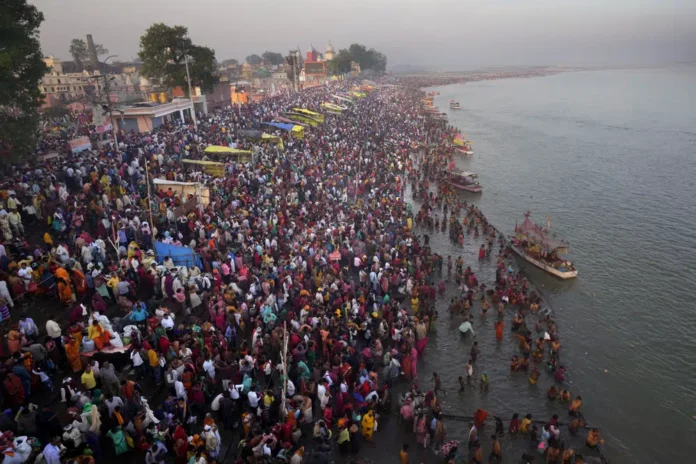NEW DELHI (AP) – India is on track to overtake China as the world’s most populous country by mid-2023, according to United Nations data on Wednesday, with a booming young Indian population boosting the economy. The question arises as to whether it will boost growth. It will become a burden after a few years.
India has the world’s largest population from her 15 to her 24 years of age with her 254 million, while China suffers from an aging population and stagnating population growth. This raises hopes that demographic shifts could pave the way for India to become an economic and global powerhouse.
India’s young citizens could fuel the country’s economic growth in the years to come, but it could easily become a problem if they are not properly employed. India’s economy is one of the fastest growing with a growing population. Tech giant Apple wants to turn India into a potential manufacturing hub by moving some manufacturing out of China, where wages are rising as the working-age population shrinks.
India will have about 2.9 million more people than China by the middle of this year, according to a United Nations report. According to United Nations projections, India’s population is estimated to be her 1.4286 billion by then, compared to her 1.4257 billion in mainland China. Demographers say it’s impossible to calculate an exact date due to demographic data limitations. India has not had a census since her 2011.
China has had the world’s largest population since at least 1950. This is the year the United Nations started releasing population data. The populations of China and India both exceed her 1.4 billion and together account for more than a third of her world population of 8 billion.
Not long ago, India was expected to become the most populous country of her decade. However, with fewer children in families and a declining birth rate in China, the timing hastened.
In contrast, India has a much younger population, a higher fertility rate and a declining infant mortality rate over the last 30 years. Still, the country’s fertility rate is steadily declining, falling from more than five births per woman in 1960 to just over two in 2020, according to World Bank data.
The country’s population has more than quadrupled since independence 76 years ago. As India is projected to become the world’s largest country, it is grappling with the growing threat of climate change, deep inequalities between urban and rural populations, economic disparities between men and women, and widening religious disparities.
In a survey of 1,007 Indians conducted by the United Nations in conjunction with the report, 63% of respondents said economic issues were their top concerns when considering demographic change, and environmental, health and human rights concerns.
“India’s findings suggest that generalized fear pervades a large portion of the general public. Nevertheless, the population figures should not sound fear or alarm,” said Andrea Wojner, head of the United Nations Population Fund for India, in a statement. She added that it should be seen as a symbol of progress and development “when individual rights and choices are upheld.”
Many are hopeful that India’s working-age population will grow, believing in a “demographic bonus”, the potential for economic growth if the country’s young population outnumbers the proportion of older people past working age. I’m here. It has helped China solidify its position as a world power.
“To date, the demographic dividend has been underutilized. The working-age population is growing rapidly, but employment has not increased,” said Mahesh Bias, director of the Indian Center for Economic Monitoring. He added that the country has struggled to create additional jobs for the past six years, with the number of jobs stagnating at 405 million.
India has undergone a phenomenal transformation from a poor country in 1947 to her $3 trillion economy, the third largest in Asia. It is a major exporter of software, vaccines and more, and has lifted millions out of poverty and entered a growing new middle class as the highly skilled sector soars.
But also unemployed. According to her CMIE stats for 2022, only 40% of working-age Indians are employed.
Poonam Muttreja, head of the India Population Foundation, agreed, saying the country needs to plan better for its young people. “This large population requires huge investments in skills to take advantage of the opportunities to participate in the jobs that the economy offers. But we also need to create more jobs for them.” He added that investment in education is also necessary.
“A country’s demographic bonus depends not only on quantity but also on quality,” said Wang Wenbin, spokesman for China’s foreign ministry.
“Population is just as important as talent,” Wang said at a briefing.






